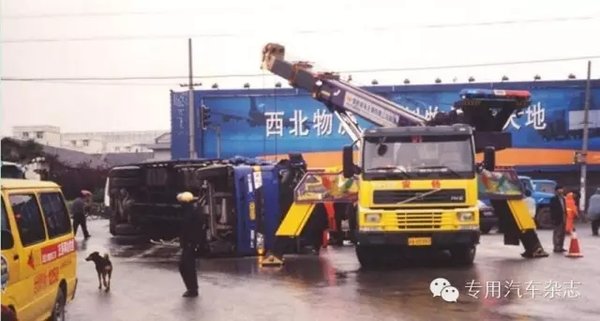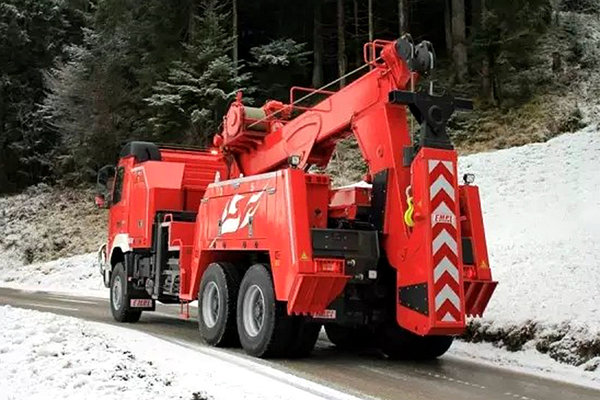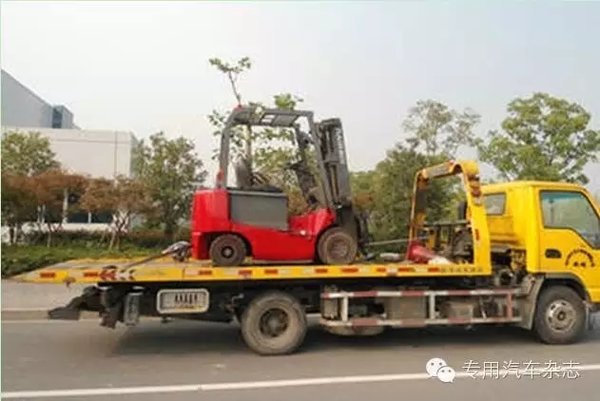With the improvement of the living standards of our residents and the continued advancement of urbanization, the number of new cars and the number of private cars have continued to increase, and all kinds of traffic and freight vehicles related to people’s livelihood have continued to increase, which has also contributed to traffic accidents. The number of events such as vehicle failures has increased. The “high-price trailer fees†generated by car rescues and obstacle-free activities are often the headlines of the news.

Most of the people (including some news media) are not "righteous indignation" about this "high-price trailer" attitude, but as an author working in the wrecker industry for many years, they have a split view of "astronomical trailer fees." . On the one hand, there are indeed a large number of wreckers and rescue companies that are conscientiously arbitrarily charging the owners; on the other hand, the rescue costs of some formal wreckers and rescue companies are also subject to ordinary people, and even some news media, to the wreckers rescue project. The high fees and charges do not comprehend and cause considerable "misunderstandings".
In the eyes of the average person, the wrecker is a kind of “trailerâ€, which is used to “carryâ€, “pull†or “back load†the transport of the accident vehicle or the fault vehicle through some kind of equipment on the wrecker. Therefore, whether a wrecker is a “carrying,†“dragging,†or “backing,†an accident vehicle or a faulty vehicle, if it is only a few kilometers, tens of kilometers, or even hundreds of kilometers of the trailer, it will produce The cost is basically the same as the cost incurred when the truck is fully loaded and transported. It is absolutely impossible and there should not be a “high price†fee. Indeed, it is impossible and will not provide "astronomical" fees for formal evacuation and rescue companies.
It is precisely because of this that local government departments or the TARPA, in order to regulate the local tow-removal toll fees, issued a number of "trailer starting prices" such as taxi fares in the form of government documents or trade associations. Charge rules. However, these documents or rules are all equivalent to the operation of taxis or freight cars. This is essentially still regards the trailer as a kind of special transportation vehicle that charges according to the "mileage for driving mileage" instead of a dedicated working vehicle.

If the wrecker used the wrecker's own equipment or called other equipment (such as a car crane) before "carrying", "dragging" or "carriage back" of the accident car, the accident vehicle was made necessary and If necessary, such as salvation, righting, and dragging, the cost of the entire rescue effort will not be the cost of a single trailer. It will also require the cost of salvation, righting, etc., and sometimes salvation. The cost of projects such as Fuzheng will be much greater than the cost of the trailer. Because rescue, righting and other obstacle-free activities require more than just equipment and tools, they need professional skills and experience to ensure safe and efficient operations and avoid secondary accidents.
So, why is a reasonable "high price trailer" misunderstood? This requires understanding and understanding what is the definition of a wrecker? What kind of car is it? What features and uses does it have? What kind of role has it played in the rescue of obstacles?
â— Wrecker's national standard definition is not accurate
China’s GB/T17350-2009 “Special Vehicles and Special Trailer Terms, Codes, and Formulation Methods†and the QC/T6345-2005 “Wrecker†standard approved and issued by the National Development and Reform Commission define the “wrecker†as “equipment Towing, lifting and other equipment, special vehicles used to clear road barriers." From the definition of this definition, the wrecker is mainly used to clear road barriers, and its operation behavior is simple or single, without any technical content. From this, it can be seen that even the above-mentioned reasonable towing fee can be misunderstood as a “high-price trailer feeâ€, which is easy to understand.

In fact, the current definition of a wrecker clearly does not fully and accurately describe the operation and use of the wrecker. If only according to this definition, the current work of the wrecker is all “unprofessionalâ€: the wrecker carries the end of the car (tire off the ground) on the road; the wrecker is dragged with a rod While another vehicle is driving (the tire is not separated from the ground), although the wrecker is engaged in back-loading work, the backed-up vehicle is not only an accident vehicle but also a vehicle that can normally travel, such as a new car that is not on the license plate and other forbidden vehicles. Forklifts and other equipment that travel on roads; and some wreckers need to use their own jibs, winches, etc., or call other wreckers, car hoists, etc. Perform rescue, rescue and rescue work such as righting, turning, and lifting. Sometimes, the scene of a rescue effort is not necessarily implemented on the "road" of the definition. Therefore, these tasks are far from the standard definition of "removing road barriers" in the definition.
The above operations and multiple uses of the wrecker have actually far exceeded the definition of the wrecker itself. In real life, it has indeed occurred that the traffic control department stipulated the business of the wrecker according to the wrecker definition, and even penalized the wrecker for the above-mentioned part of the operation, because it considered that the wrecker’s duties and operations were exceeded. range. This narrow definition has indeed brought about no small losses to the wrecker manufacturers and users, but also confined the “astronomical trailer fees†that are reasonable in reality.
It is precisely because of this that the “Trouble Removal and Rescue Code for Road Vehicles†issued by the Ministry of Transport in 2015, Section 3.2: “Wreckers are equipped with lifting, towing, lifting, etc. Special vehicles to clear accident vehicles that cause road obstructions." And in the lower part of this article, note the "Note: rewrite GB/T 17350-2009, definition 3.1.6.2.52" with the small one. It is clear that the drafter of JT/T 891-2014 also believed that the definition of a wrecker in the original GB/T 17350-2009 does not reflect the main work of the wrecker.

In this regard, regardless of whether the standards of ministries and commissions and industries can allow amendments to the definition and contents of national standards without authorization, the JT/T 891-2014 analyses the definition of wreckers. The standard considers that “wreckers are mainly used Clearing up accident vehicles that impede roads, then literally speaking, the definition of wreckers in JT/T 891-2014 is indeed closer to the wrecker than the GB/T17350-2009 and QC/T6345-2005 standards. My job. However, it still does not fully describe the actual use of the wrecker and its mode of operation. Such as the flat-type wrecker carrying new cars to participate in car activities; wreckers to lift, rescue accident vehicles falling in the ditch, in the river, etc., and these accidents may not impede the road.
â— How to define a wrecker abroad?
In fact, the definition of wreckers in countries with advanced wrecker technology is quite comprehensive and complete. For example, SAEJ2512-1999 "Towing Equipment Ratings and Practices" in the American Wrecker Standard defines the wrecker as: tow truck, tow vehicle, car carrier, recovery vehicle, etc., that is, the wrecker is a type with care (drag). Vehicles that carry, carry, transport, rescue, etc.; and in Canada, the United Kingdom, France, Italy, Germany, Japan, and other countries, the definition of the wrecker is defined in terms of the meaning of the recovery vehicle, that is, the definition of the wrecker. The focus of the statement is that wreckers are "through professional tools and equipment to restore, help, and assist vehicles and equipment that cannot normally travel, enabling them to run normally and safely." The methods for restoring, assisting, and assisting vehicles and equipment that cannot function normally include back-loading, lifting, righting, reversing, pulling (pulling) pulls, etc., and even simple power take-ups and tire repairs. These definitions can indeed completely and comprehensively summarize the functions, uses, and operating methods of the wrecker.
Dental Floss Pick Injection Machine
Dental floss is a thin thread made of nylon, plastic and other fibers. It is a kind of cleaning tooth. At present, dental floss is widely used in the developed countries. At the sametime, it is also become more and more popular in our country. Thus, clients are able to use the vertical dental floss pick injection machine, Dental Floss Pick Rubber Injection Machine or automatic plastic dental floss pick injection machine and other type dental floss pick injection machine to produce dental floss products. The most important is we will offer the good quality products and professional sevice to every clients.
Features & Applications:
1. Vertical clamping mold, vertical injection, and double sliding and rotary table for options, attached with the precision liquid silicone tube.
2. Combine with well-known brand pump material feeder, environmental protection, precision and stability.
3. Accurate Silica Gel and the pigment is mixed with high viscosity silicone.
4. Optimised design of the insulation board to prevent heat loss.
5. Can be selected to make single color or multi color products per user's demand.
Dental Fross Pick Injection Machine
Dental Floss Pick Injection Machine,Dental Floss Pick Injection Molding Machine,Dental Floss Pick Rubber Injection Machine
DONGGUAN TIANCHENG MACHINERY CO., LTD. , http://www.tcinjectionmachine.com